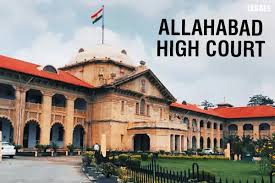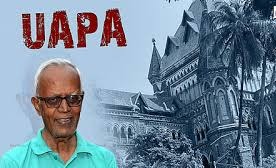Sanjay K. Agrawal, J
1. The substantial questions of law involved, formulated and to be answered in this second appeal preferred by the plaintiff are as under: -
1. Whether the findings recorded by the First Appellate Court that the appellant/plaintiff is not the daughter of deceased Nanh, is perverse ?
2. If the answer to question No.1 is in negative, whether the defendant can lawfully succeed to the property belonging to late Nanh ?
(For the sake of convenience, parties would be referred hereinafter as per their status shown in the plaint before the trial Court.)
2. The suit property was originally held by Nanh. The plaintiff claimed that she is daughter of Nanh out of his wedlock with Bundeli and therefore, she
has inherited the property left by Nanh, but she has been dispossessed by defendant No.1 forcibly, as such, she is entitled for declaration of title that
she is exclusive owner of the suit property and entitled for possession of the suit property.
3. Defendant No.1 filed his written statement and denied the averments made in the plaint stating inter-alia that Bundeli was married with Dukhi and
out of that marriage, Bundeli had two daughters namely Rambai & Prembai. Prembai has already been died, as such, Nanh had never married with
Bundeli and therefore, the plaintiff not being daughter of Nanh is not entitled to succeed the property left by Nanh.
4. The trial Court after appreciating oral and documentary evidence available on record, by its judgment and decree dated 26.9.91, held that the
plaintiff is daughter of Nanh and entitled to succeed the property left by Nanh and granted decree for declaration of title and delivery of possession,
which the first appellate Court interfered with in appeal taken by defendant No.1 and set aside the judgment and decree of the trial Court. Questioning
that judgment and decree, this second appeal under Section 100 of the CPC has been preferred by the appellant/plaintiff, in which substantial questions
of law have been formulated and set-out in the opening paragraph of this judgment.
5. Mrs.Meena Shashtri, learned counsel appearing for the appellant/plaintiff, would submit that the first appellate Court is absolutely unjustified in
reversing the well merited and well reasoned judgment and decree of the trial Court holding that the plaintiff is daughter of Nanh and therefore, she is
entitled to succeed the property of Nanh, as such, the judgment and decree of the first appellate Court deserves to be set aside being perverse and the
judgment and decree of the trial Court be restored. She relied upon the judgment of the Supreme Court in the matter of Sudama Prasad v. Ashok
Kumar 1.
6. Mr.Vivek Tripathi, learned counsel for respondent No.1/defendant No.1, would support the impugned judgment and decree and submit that the first
appellate Court has rightly appreciated the evidence available on record and came to the conclusion that the plaintiff is not the daughter of Nanh and
therefore, she is not inherited the property of Nanh, as such, the second appeal deserves to be dismissed. He relied upon the judgments of the
Supreme Court in the matters of Sitaji and others v. Bijendra Narain Choudhary and others 2, Dolgobinda Paricha v. Nimai Charan Misra & others 3.
7. I have heard learned counsel appearing for the parties and considered their rival submissions made hereinabove and also went through the records
with utmost circumspection.
8. The trial Court has held that the plaintiff is daughter of Nanh and as such, she has succeeded to the property left by Nanh, which has been
interfered with by the first appellate Court by holding 1 (2007) 15 SCC 554 2 AIR 1954 SC 601 3 AIR 1959 SC 914 that the plaintiff is not the
daughter of Nanh, therefore, she is not entitled to inherit the property left by Nanh.
9. The question of consideration would be whether finding recorded by the first appellate Court that the plaintiff is not the daughter of Nanh is a
perverse finding open to interfere by this Court ?
10. In order to decide the plea raised at the Bar, it would be appropriate to notice Section 50 of the Indian Evidence Act, which states as under:-
50. Opinion on relationship, when relevant.--When the Court has to form an opinion as to the relationship of one person to another, the opinion,
expressed by conduct, as to the existence of such relationship, or any person who, as a member of the family or otherwise, has special means of
knowledge on the subject, is a relevant fact:
Provided that such opinion shall not be sufficient to prove a marriage in proceedings under the Indian Di- vorce Act, 1869 (4 of 1869) or in
prosecutions under section 494, 495, 497 or 498 of the Indian Penal Code (45 of 1860).
This provision states that when the Court has to form an opinion as to the relationship of one person to another, the opinion expressed by conduct by
any person who is, as a member of the family, or otherwise, has special means of knowledge on the subject, is relevant as to existence of such
relationship. Following two things are necessary to make the evidence of a witness relevant under this Section:-
(i) The witness must have special means of knowledge with regard to existence of disputed relationship, either as a member of family or otherwise;
and
(ii) The witness must depose to his own conduct towards the person whose relationship is in dispute.
11.The Supreme Court in the matter of Sitaji (supra) qua Section 50 of the Evidence Act has held as under:-
10......A member of the family can speak in the witness box of what he has been told and what he has learned about his own ancestors, provided
what he says is an expression of his own independent opinion (even though it is based on hearsay derived from deceased, not living, persons) and is
not merely repetition of the hearsay opinion of others, and provided the opinion is expressed by conduct. His sources of information and the time at
which he acquired the knowledge (for example, whether before the dispute or not) would affect its weight but not its admissibility. This is therefore
legally admissible evidence which, if believed, is legally sufficient to support the finding.
12. Likewise, the Supreme Court in the matter of Dolgobinda Paricha (supra) has laid down the scope and applicability of evidence of opinion of
relationship under Section 50 of the Evidence Act as under:-
On a plain reading of the section it is quite clear that it deals with relevancy of a particular fact. It states in effect that when the Court has to form an
opinion as to the relationship of one person to another the opinion expressed by conduct as to the existence of such relationship of any person who has
special means of knowledge on the subject of that relationship is a relevant fact. The two illustrations appended to the section clearly bring out the true
scope and effect of the section. It appears to us that the essential requirements of the section are - (1) there, must be a case where the court has to
form an opinion as to the relationship of one person to another; (2) in such a,case, the opinion expressed by conduct as to the existence of such
relationship is a relevant fact; (3) but the person whose opinion expressed by conduct is relevant must be a, person who as a member of the family or
otherwise has special means of knowledge on the particular subject of relationship ; in other words,the person must fulfil the condition laid down in the
latter part of the section. If the person fulfils that condition, then what is relevant is his opinion expressed by conduct. Opinion means something more
than more retailing of gossip or of hearsay; it means judgment or belief, that is, a belief or a conviction resulting from what one thinks on a particular
question. Now, the "" belief "" or conviction may manifest itself in conduct or behaviour which indicates the existence of the belief or opinion. What the
section says is that such conduct or outward behaviour as evidence of the opinion held is relevant and may, therefore, be proved.
13. Reverting to the facts of the present case in light of statutory provisions contained in Section 50 of the Evidence Act and the principle of law laid
down by the Supreme Court in the above-stated judgments (supra), in order to prove the relationship, the plaintiff has examined herself as PW-1. She
has stated that she is daughter of Nanh. She has also stated that her mother's first marriage was performed with Dukhi and thereafter her mother
performed re-marriage/second marriage with Nanh. Surawan (PW-2), resident of village Podi, Tahsil Pratappur is not Nanh's family member and he
is the person who knows the plaintiff as well as the defendant. He stated on oath that the plaintiff is the daughter of Nanh. Mazi (PW-3) who claimed
that plaintiff's mother was his sister, has stated that Bundeli was firstly married with Dukhi and after death of Dukhi, Bundeli re- married with Nanh
and out of her wedlock with Nanh, they were blessed with daughter i.e. plaintiff, whereas Bulchu (PW-4) claimed that the plaintiff is his niece. The
defendant's witness Ratiram (DW-3) aged about 80 years, resident of village Podi, Tahsil Surajpur, has stated that Nanh has died issueless and since
he was issueless he had kept grandson of his brother i.e. Pardeshi with him. He has been cross-examined on behalf of the plaintiff and he has denied
the fact that plaintiff Rambai is the daughter of Nanh out of his wedlock in Bandwa form with Bundeli. Likewise, Mansai, aged about 80 years,
resident of Village Podi, has also been examined as DW-4. He has admitted that Nanh has re-married with Bundeli in Bandhwa form and at that time,
Bundeli had two daughters namely plaintiff-Rambai and Prembai and Rambai is daughter of Bundeli out of her wedlock with Dukhi and after death of
Dukhi, Bundeli has re-married with Nanh. He has clearly refuted the fact that the plaintiff is daughter of Nanh.
14. The first appellate Court after appreciating oral and documentary evidence available on record has reversed finding of the trial Court holding the
fact that the plaintiff is the daughter of Nanh. After going through the evidence available on record and considering that none of the family members
of Nanh was examined by the plaintiff and witnesses examined by the defendant i.e. Ratiram (DW-3) and Mansai (DW-4) have categorically stated
that the plaintiff is not the daughter of Nanh out of his wedlock with Bundeli and Rambai & Prembai both were daughters of Bundeli out of her
wedlock with Dukhi and she entered into second marriage with Nanh after death of Dukhi, as such, finding of fact recorded by the first appellate
Court that the plaintiff is not the daughter of Nanh is finding of fact based on evidence available on record, which is neither perverse nor contrary to
record. The substantial question of law is answered in favour of the defendant and against the plaintiff.
15. Accordingly, the second appeal deserves to be and is hereby dismissed leaving the parties to bear their own cost(s).
16. Decree be drawn-up accordingly.

